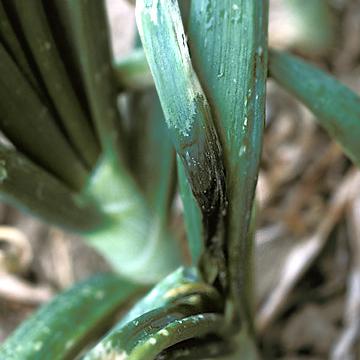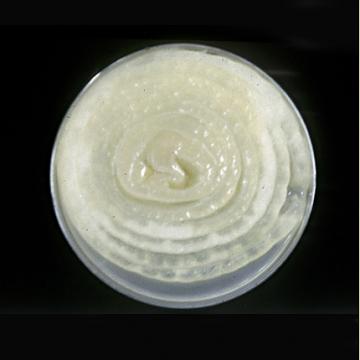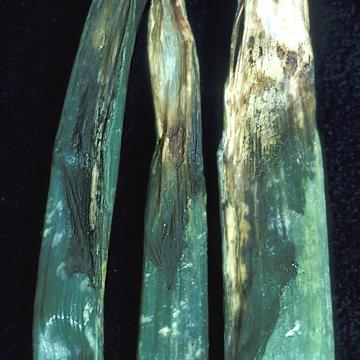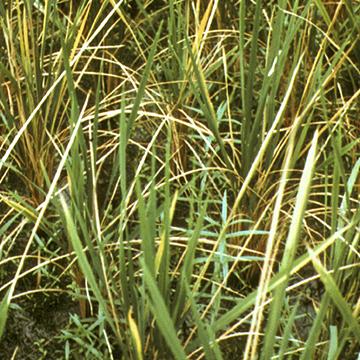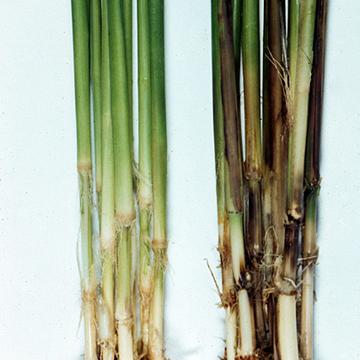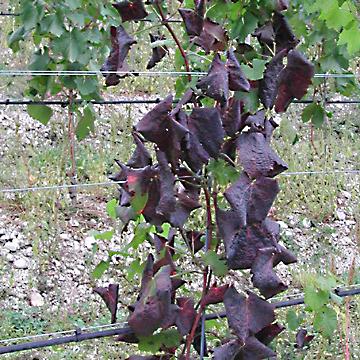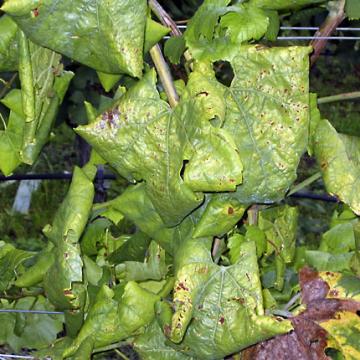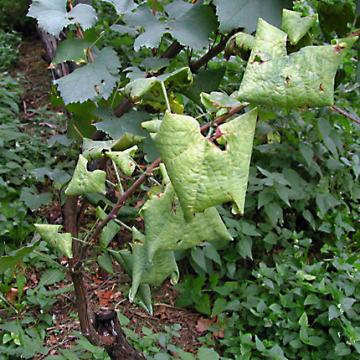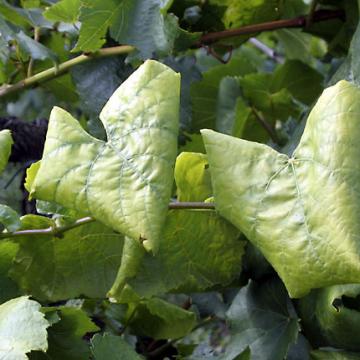DISEASE: Bacterial flower stalk and leaf necrosis
HOST: Onion
Dark, rotted areas of stalk and leaves caused by systemic invasion of the pathogen.
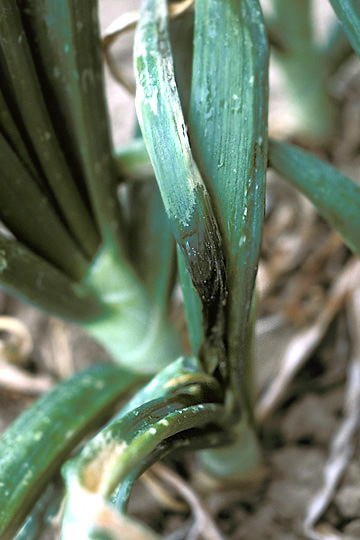
Bacterial flower stalk and leaf necrosis | Onion
DISEASE: Bacterial flower stalk and leaf necrosis
HOST: Onion (Allium cepa)
PATHOGEN: Pseudomonas marginalis pv. marginalis
SOURCE: S. Mohan
DISEASE: Bacterial flower stalk and leaf necrosis
HOST: Onion
Gray-brown rot of onion after inoculation. Disease starts as small, water-soaked lesions that later develop into slimy, gray-brown rot. The disease progresses downward from the stalk and may rot the entire bulb.
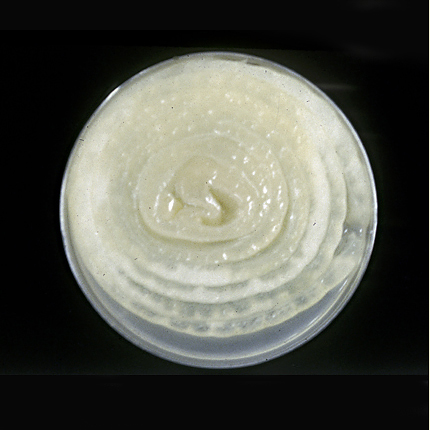
Bacterial flower stalk and leaf necrosis | Onion
DISEASE: Bacterial flower stalk and leaf necrosis
HOST: Onion (Allium cepa)
PATHOGEN: Pseudomonas marginalis pv. marginalis
SOURCE: R. Gitaitis
DISEASE: Bacterial flower stalk and leaf necrosis
HOST: Onion
Leaves with necrosis and rot. The common name for this disease is the same as those used for two other diseases. Also, another common name for this disease is bacterial soft rot.
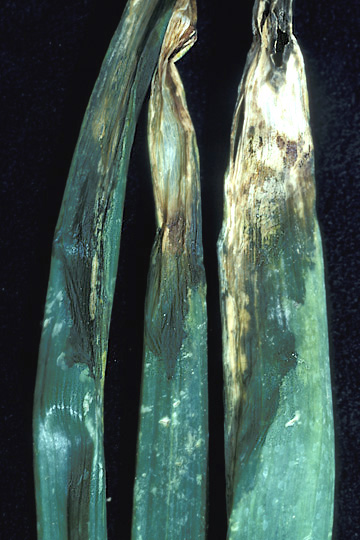
Bacterial flower stalk and leaf necrosis | Onion
DISEASE: Bacterial flower stalk and leaf necrosis
HOST: Onion (Allium cepa)
PATHOGEN: Pseudomonas marginalis pv. marginalis
SOURCE: S. Mohan
DISEASE: Bacterial foot rot
HOST: Rice
The disease causes sheaths to turn dark brown and rot; dead leaves droop. Nodes, culms, and crowns also decay, and infected tillers are easily detached from the crown. Culms and internodes turn black.
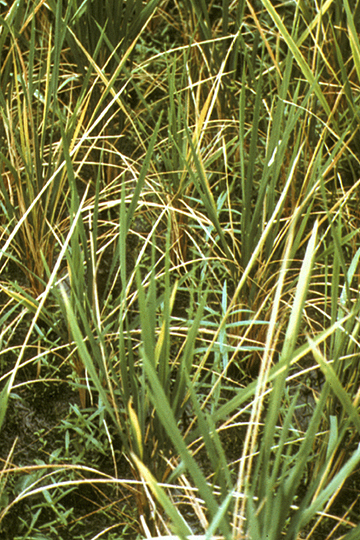
Bacterial foot rot | Rice
DISEASE: Bacterial foot rot
HOST: Rice (Oryza sativa)
PATHOGEN: Dickeya zeae
PATHOGEN SYNONYM: Erwinia chrysanthemi pv. zeae
SOURCE: M. Goto
DISEASE: Bacterial foot rot
HOST: Rice
Decayed culms (right) and healthy culms (left). Leaf sheaths of infected plants exhibit dark brown decay and attached leaves turn yellow and wilt.
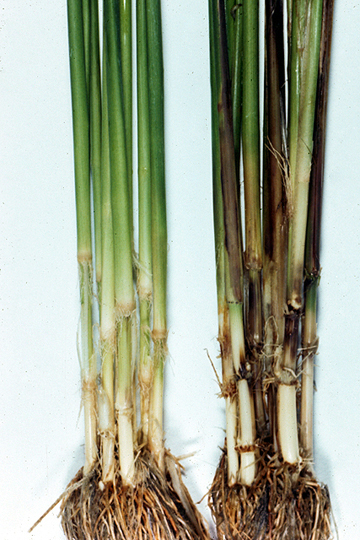
Bacterial foot rot | Rice
DISEASE: Bacterial foot rot
HOST: Rice (Oryza sativa)
PATHOGEN: Dickeya zeae
PATHOGEN SYNONYM: Erwinia chrysanthemi pv. zeae
SOURCE: M. Goto
DISEASE: Bois noir disease
HOST: Grape
Severe symptoms of triangular-trapezoid-shaped leaves with desiccated appearance.
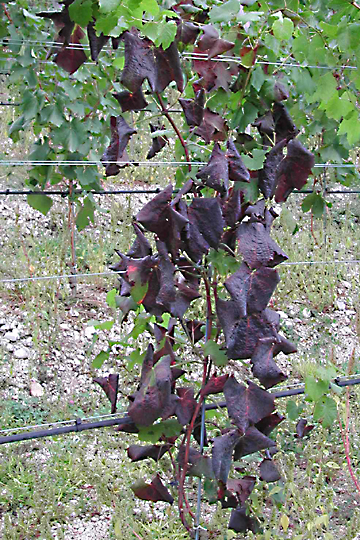
Bois noir disease | Grape
DISEASE: Bois noir disease
HOST: Grape (Vitis vinifera)
PATHOGEN: 'Candidatus Phytoplasma solani'
PATHOGEN SYNONYM: Phytoplasma Stolbur group
SOURCE: W. Schweigkofler
DISEASE: Bois noir disease
HOST: Grape
Leaves with disease symptoms identical to flavescence doree, a yellows disease caused by a different phytoplasma. The latter has a slightly different host range and is transmitted by a leafhopper.
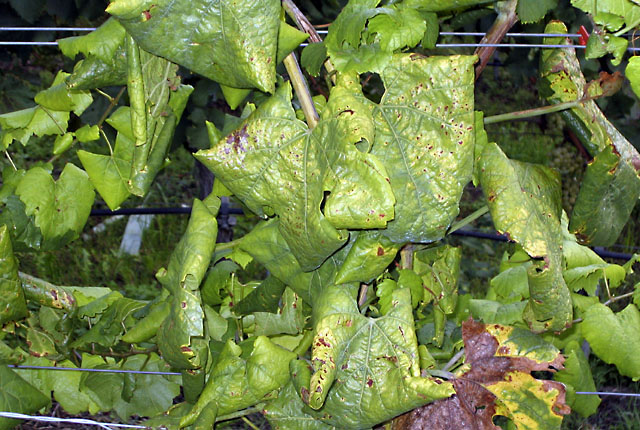
Bois noir disease | Grape
DISEASE: Bois noir disease
HOST: Grape (Vitis vinifera)
PATHOGEN: 'Candidatus Phytoplasma solani'
PATHOGEN SYNONYM: Phytoplasma Stolbur group
SOURCE: W. Schweigkofler
DISEASE: Bois noir disease
HOST: Grape
Bois noir disease may be expressed on one branch while other branches appear healthy. Note trapezoid-shaped leaves.
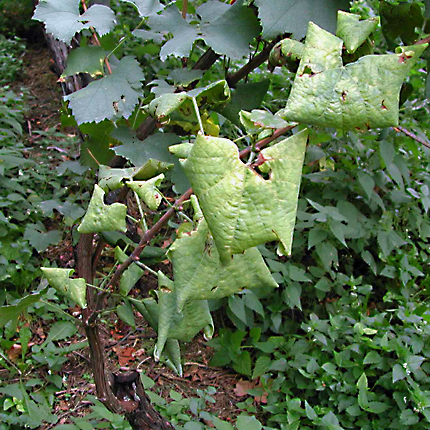
Bois noir disease | Grape
DISEASE: Bois noir disease
HOST: Grape (Vitis vinifera 'Chardonnay')
PATHOGEN: 'Candidatus Phytoplasma solani'
PATHOGEN SYNONYM: Phytoplasma Stolbur group
SOURCE: W. Schweigkofler
DISEASE: Bois noir disease
HOST: Grape
Typical symptoms of triangular-trapezoid-shaped, greenish yellow leaves.
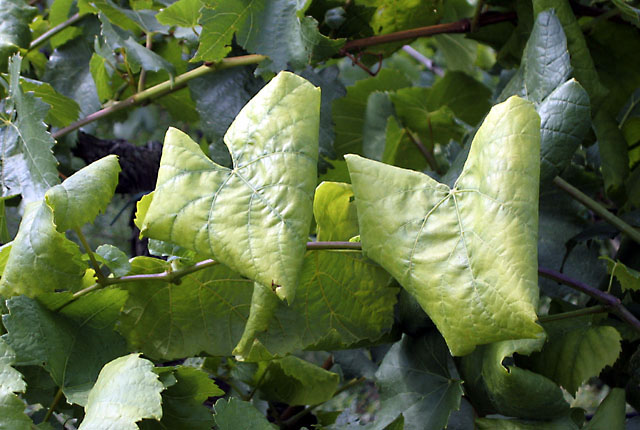
Bois noir disease | Grape
DISEASE: Bois noir disease
HOST: Grape (Vitis vinifera 'Chardonnay')
PATHOGEN: 'Candidatus Phytoplasma solani'
PATHOGEN SYNONYM: Phytoplasma Stolbur group
SOURCE: W. Schweigkofler


